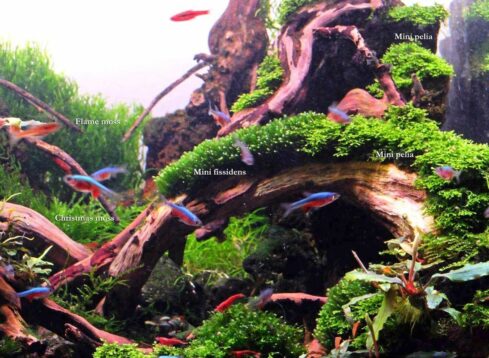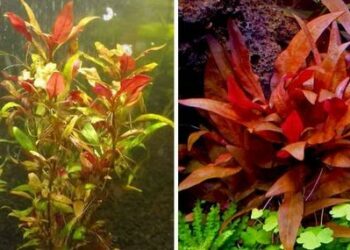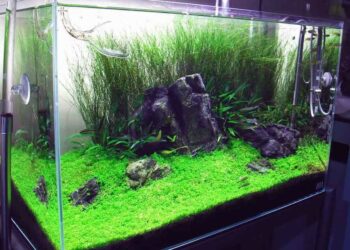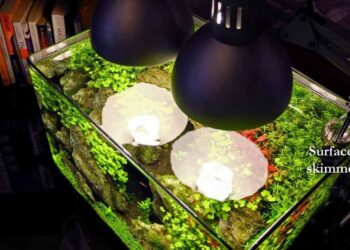Does CO2 harm fish?
There is a widespread concern that the pH swings from CO2 injection may hurt livestock.
The main reason why pH stability is important in aquariums is that pH levels normally reflect alkalinity (KH levels/carbonate hardness) which affects fish/livestock osmoregulation. Sensitive shrimp for example, are affected by sudden changes in carbonate salt concentrations in water and dislike KH swings of more than 3 degrees in a short time span. (This would be also reflected in the pH changing rapidly in a short time).
Excessive levels of CO2, and extreme levels of pH ( where the acidity itself becomes an issue ) will still affect livestock, but these are separate issues from pH swings caused by CO2 per se.
If we do large 60-80% water changes in our CO2 injected planted tanks, the pH changes a full 1.0 unit in 20-30 minutes or less, yet we never lose sensitive shrimp or fish if the other parameters are kept consistent. pH swings ( 1 full point + ) also occur in nature very commonly, as CO2 levels build up overnight due to decomposition, but are quickly depleted during light hours.
Fish from acid peat swamps will do alright in a tank where the pH drops from 7 to 5.8 during CO2 injection as the low point in the cycle pH(5.8) is within range of their natural living conditions. However, alkaline water fishes may not take the dip into the pH 5.8 range well. It is not the swing, but the pH value itself being outside of the fish’s natural range. The same alkaline water fish can survive a comparative pH swing from 8.5 to 7. It is important to differentiate the impact of a pH change vs the impact of an extreme pH value in itself.
To read further on how the different water parameters affect fish, head to the water parameter section.
However, if pH is changed without a change in KH, as in the case of CO2 injection, the swings in pH do not impact livestock.
Sensitive fish such as Sundadanio axelrodi and shrimps can be kept in good form in CO2 injected tanks, if the rest of the parameters are controlled well.

Does planted aquarium need CO2?
There is widespread belief that CO2 injection is unnatural, that a planted tank without CO2 injection is more natural.
Natural waters often have elevated CO2 levels (10 – 30+ppm) due to organic decomposition; CO2 levels build up at night in natural systems and is quickly exhausted during light hours. This is much higher than the 2-3ppm that standard non CO2-injected fish tanks will have (in equilibrium with atmospheric CO2 levels given gas pressure laws).
Many plants will not grow to their optimal form without a good supply of carbon.
Having good access to carbon doesn’t just make plants grow faster. It also impacts the quality of growth, coloration, and plant health. This directly affect algae issues in the tank, as unhealthy plants are magnets for algae.


Does a low light tank benefit from CO2?
There is widespread belief that only high-light tanks require injected CO2, or conversely that injected CO2 requires a pairing with high light.
Plants benefit tremendously from CO2 in both strong & weak aquarium lighting. This was proved conclusively in controlled experiments that plotted plant growth with varying CO2/light combinations.
In fact, low lighting + CO2 is one of the most stable combinations available to aquarists. For aquarists looking for slower but healthy growth, using slightly lower light & CO2 levels is a perfect combination. It is also far easier to control algae issues in a tank with lower lighting.
Check out this thread where PAR values on well known ADA aquascapes are measured.

Do I tune down CO2 if fish appear gasping for air?
If fish are gasping at the surface, it is a sign of too much CO2 in aquarium at the point that the fish is gasping. However, this does not mean necessarily that your plants are getting enough CO2 throughout the day. Read about this paradox here in the indepth section of natureaquarium.org
Depending on the gaseous exchange rate in your tank, the tank may also be suffering from poor O2 levels. Some form of gaseous exchange must be present in most tanks for CO2 to be tuned to high levels. This means having adequate surface agitation, a clean water surface, and/or circulation between top and deeper layers of water.
I use surface skimmers on my tanks to keep the water surface clean and draw oxygenated water into the filter.
